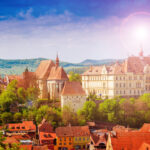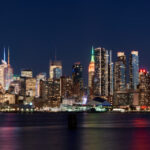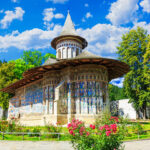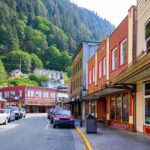Nestled in the picturesque region of Bucovina in northern Romania, the Painted Monasteries stand as a testament to the country’s rich cultural and religious heritage.
The UNESCO added them to the list in 1993 because they represent an exceptional example of Byzantine art. Each church tells its own story through its frescoes, which depict scenes from the Bible and from the lives of saints.
These architectural marvels, adorned with intricate frescoes both inside and out, have earned their rightful place on the UNESCO World Heritage list. Let’s embark on a journey to explore these masterpieces.
An Introduction to the Painted Monasteries
The Painted Monasteries of Bucovina are a collection of eight Orthodox churches built in the late 15th to the late 16th centuries. Their unique feature? The stunning exterior and interior frescoes depicting scenes from the Bible, the lives of saints, and the history of Christianity. These frescoes, vibrant and well-preserved, are not just religious artifacts but also provide insights into the medieval history of Romania.
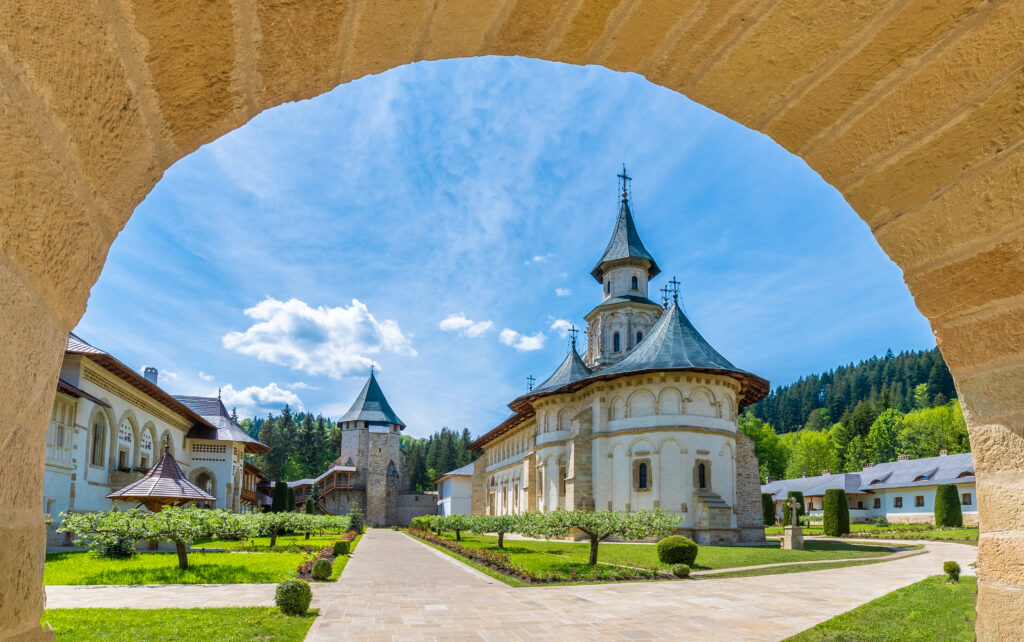
- The Monasteries at a Glance
The Painted Monasteries of Romania, located primarily in the Bucovina region, are a group of Orthodox churches renowned for their exterior and interior frescoes. Here’s a list of the most famous Painted Monasteries:
- Voroneț Monastery: Often dubbed the “Sistine Chapel of the East,” it’s famous for its unique shade of blue, known as “Voroneț blue.”
- Moldovița Monastery: This monastery’s frescoes are notable for their dominant yellow tones and the depiction of the Siege of Constantinople.
- Sucevița Monastery: A fortified monastery with frescoes predominantly in green, it’s known for the Ladder of Virtues fresco.
- Arbore Monastery: Dedicated to Saint John the Baptist, its frescoes are set against a deep blue background.
- Humor Monastery: Notable for its reddish-brown frescoes, it features scenes from the lives of saints and biblical tales.
- Pătrăuți Church: One of the oldest, it’s renowned for its frescoes of the Crucifixion and the Tree of Jesse.
- Probota Monastery: Rebuilt in the 16th century, its frescoes are a blend of Byzantine and Gothic influences.
- Dragomirna Monastery: The tallest medieval monastery in Bucovina, its frescoes are a testament to the Moldavian art of the late 16th and early 17th centuries.
These monasteries are not just religious sites but also significant cultural and historical landmarks, each telling a unique story through its frescoes. If you’re planning a visit, each one offers a distinct experience in terms of art, architecture, and spiritual ambiance.
How to get here from Iasi or Bucharest
The Painted Monasteries of Romania, primarily located in the Bucovina region, are accessible from major cities like Iași and Bucharest. Here’s a guide on how to get to these monasteries from both cities:
From Iași:
Iași is closer to the Bucovina region than Bucharest, making it a more convenient starting point for many travelers.
- By Car: The most flexible way to explore the Painted Monasteries is by renting a car. From Iași, you can drive to Suceava, which is about a 2-hour drive. From Suceava, the monasteries are easily accessible by car. The roads are generally in good condition, but always check for any local advisories.
- By Train: There are direct trains from Iași to Suceava. Once in Suceava, you can hire a taxi or join a local tour to visit the monasteries.
- Guided Tours: Several tour operators in Iași offer day trips or multi-day tours to the Painted Monasteries. This option provides the added benefit of a knowledgeable guide.
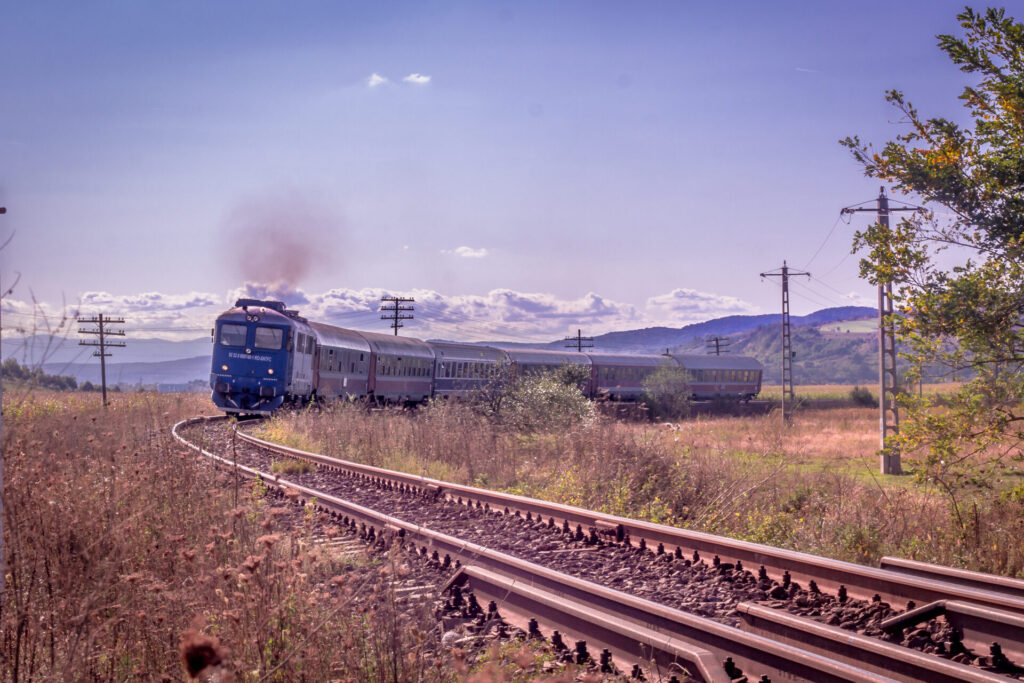
From Bucharest:
Bucharest, being the capital city, has more transportation options, but it’s also farther away from the Bucovina region and the Painted Monasteries.
- By Car: Renting a car gives you the freedom to explore at your own pace. The drive from Bucharest to Suceava takes around 6-7 hours. Once in Suceava, you can easily drive to the various monasteries.
- By Train: There are direct trains from Bucharest to Suceava. The journey can take anywhere from 6 to 8 hours, depending on the type of train. After arriving in Suceava, you can hire a taxi or join a tour to visit the monasteries.
- By Air: Suceava has an airport (Ștefan cel Mare International Airport). You can take a domestic flight from Bucharest’s Henri Coandă International Airport to Suceava. Once in Suceava, you can rent a car or join a guided tour to the monasteries.
- Guided Tours: Many tour operators in Bucharest offer trips to the Painted Monasteries. These tours can range from day trips to extended stays, allowing you to explore multiple monasteries and other attractions in the region.
Tips:
- When planning your trip, consider staying overnight in Suceava or nearby towns to give yourself ample time to explore the Painted Monasteries without feeling rushed.
- The Painted Monasteries can get busy during peak tourist seasons. It’s advisable to start your day early to avoid large crowds.
- Always check the opening hours of the monasteries, as they might vary, especially during religious holidays.
The Art and Symbolism
The frescoes of the Painted Monasteries are more than just art; they’re a narrative. They served as a means to educate the largely illiterate population about religion and history. The choice of colors, the depiction of saints, and the intricate patterns all have deep-rooted symbolism. For instance, the frequent use of blue symbolizes divinity and mystery, while red often represents passion and martyrdom.

4. Exploring Beyond the Frescoes
While the frescoes are the main attraction, the monasteries themselves are architectural gems. Many are fortified, with thick walls and watchtowers, reflecting the tumultuous times during which they were built. The interiors, with their ornate altars, wooden pews, and gold embellishments, exude a sense of serenity.
5. Tips for the Traveler
- Respect the Sanctity: Remember, these are active places of worship. Dress modestly, keep noise levels down, and always follow the guidelines set by the Painted Monasteries.
- Guided Tours: Consider hiring a local guide. Their insights into the history, art, and symbolism of the frescoes can greatly enhance your experience.
- Stay Local: Bucovina, with its rolling hills and traditional villages, offers charming local guesthouses. Staying local not only supports the community but also provides an authentic Romanian experience.
- Local Delicacies: Don’t miss out on the local cuisine. From mămăligă (cornmeal porridge) to sarmale (cabbage rolls), the food is hearty and flavorful. Also check the Corba Radauteana, which was first created here in the region, and is now served in all Romanian restaurants around the world.
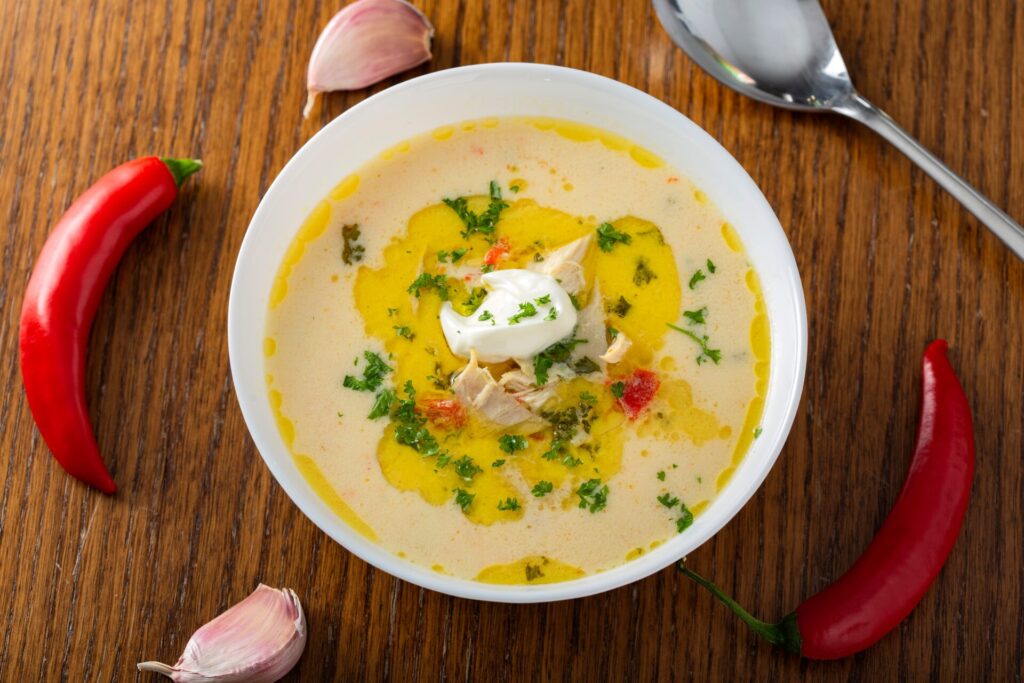
6. Best Time to Visit
Spring (April to June) and fall (September to October) are ideal for visiting the Painted Monasteries. The weather is pleasant, and the monasteries, set against a backdrop of blooming flowers or autumnal hues, are a sight to behold.
7. Getting There
The nearest major cities are Radauti and Suceava. From here, you can rent a car or join a guided tour. The roads are scenic, winding through lush landscapes and traditional villages.
8. Painted Monasteries of Romania are not just a destination; they’re a journey
The Painted Monasteries of Romania are not just a destination; they’re a journey — a journey through art, history, and spirituality. As you stand in front of these centuries-old frescoes, you’re not just a spectator; you’re a part of a continuing legacy. So, take your time, soak in the beauty, and let the monasteries tell you their tales.
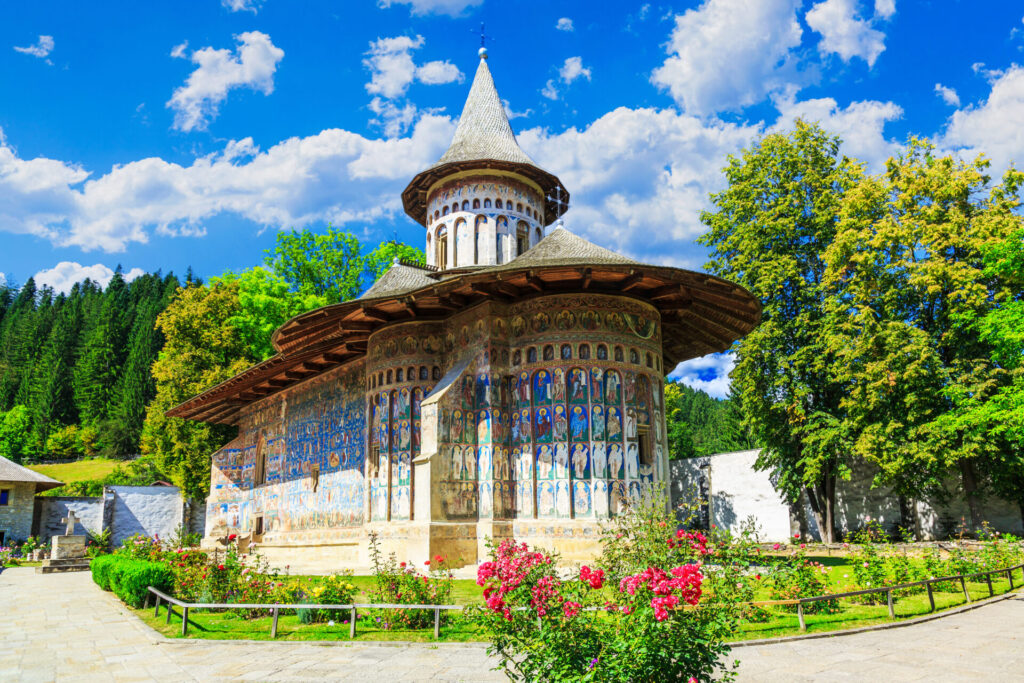
For visitors interested in exploring the painted monasteries, a one-day itinerary can be a great way to take in the highlights.
Start your day early and head to Suceava, the largest city in the region. From there, drive to the nearby Voronet Monastery, where you can admire its impressive frescoes and learn about the history of the site.
Voronet Monastery
Welcome to the Voroneț Monastery, a jewel of Bucovina and a testament to Romania’s rich religious and artistic heritage. With its breathtaking frescoes and the enchanting “Voroneț blue,” this monastery is a must-visit for anyone seeking a blend of history, art, and spirituality.
History of Voroneț Monastery:
Founded in 1488 by Stephen the Great, the Voroneț Monastery was constructed over a span of just three months and three weeks, a remarkable feat for its time. It was built to commemorate Stephen’s victory over the Ottoman Turks, and as a symbol of gratitude, he dedicated it to the Ascension of the Lord.

The Legend of Voroneț Blue: The most captivating aspect of the monastery is its unique shade of blue, which adorns many of its frescoes. The origin of “Voroneț blue” remains a mystery to this day. Legend has it that the color was created using a secret formula that was known only to the monastery’s original painters. Some say it was derived from crushed lapis lazuli, while others believe it was a gift from the heavens. Regardless of its origins, the color has remained vibrant for over five centuries, defying time and the elements.
Exploring the Frescoes:
The exterior walls of the monastery are adorned with intricate frescoes depicting scenes from the Bible, the lives of saints, and the history of Christianity. The most renowned fresco is “The Last Judgment” on the western wall. This masterpiece spans from the base to the roof and offers a vivid portrayal of heaven and hell, with angels, demons, saints, and sinners.

Inside, the nave and altar present a serene ambiance, with more frescoes illustrating biblical tales and the teachings of the Orthodox Church. The play of light through the stained glass windows adds a mystical aura to the interiors.
Moldovita Monastery – A Tapestry of Faith and Art
Next, head to the Moldovita Monastery, which is famous for its depiction of the Last Judgment. Afterward, take a break for lunch at one of the local restaurants and try some of the traditional dishes.
Introduction: Welcome to the Moldovița Monastery, one of Bucovina’s treasured painted monasteries. With its golden-yellow frescoes narrating tales of faith and valor, Moldovița stands as a beacon of Romania’s deep-rooted Orthodox traditions and artistic prowess.
History of Moldovița Monastery:
Established in 1532 by Prince Petru Rareș, the Moldovița Monastery was built on the site of an older church. Prince Rareș, the illegitimate son of Stephen the Great, continued his father’s legacy of constructing churches after significant military victories. Moldovița, with its fortified walls and watchtowers, is not just a religious site but also a symbol of the region’s resilience against invaders.

The Siege of Constantinople Fresco: One of the most iconic frescoes at Moldovița is the depiction of the Siege of Constantinople. This fresco commemorates the Byzantine Empire’s resistance against the Ottoman Empire’s onslaught in 626 AD. It’s not just a religious painting but also a subtle nod to the Moldavians’ own struggles against the Ottomans.
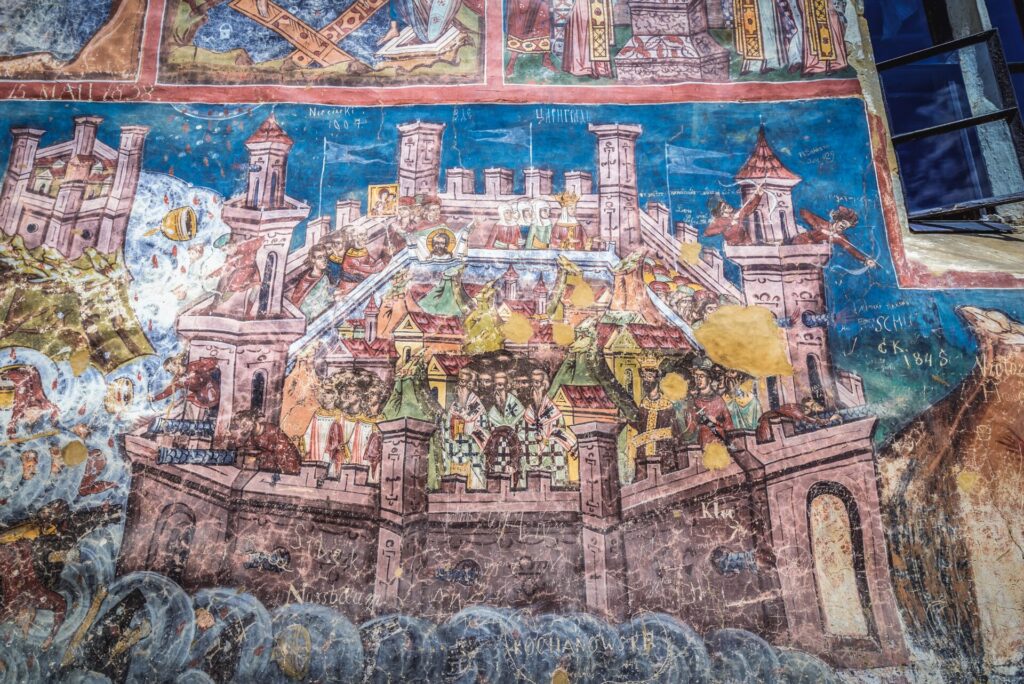
Exploring the Frescoes:
Moldovița’s exterior walls are a canvas of biblical stories, saints’ lives, and historical events. Dominated by a rich yellow hue, the frescoes have withstood the test of time, retaining their vibrancy and detail.
Inside, the monastery offers a serene space for reflection. The frescoes here delve deeper into religious teachings, with scenes from the life of Jesus, the Virgin Mary, and various saints. The play of natural light illuminates these frescoes, creating a divine ambiance.
End your day with a visit to the Sucevita Monastery, which is one of the largest and most impressive of the painted monasteries.
Sucevița Monastery: A Mosaic of Spirituality and Heritage
Introduction: Step into the realm of Sucevița Monastery, a fortified sanctuary nestled in the verdant valleys of Bucovina. With its harmonious blend of architectural styles and its frescoes awash in shades of green, Sucevița is a testament to Romania’s enduring spiritual and artistic legacy.
History of Sucevița Monastery:
Constructed between 1583 and 1586, the Sucevița Monastery was the initiative of the Movilă brothers, prominent figures in the Moldavian leadership of the time. Unlike many other monasteries of its era, Sucevița boasts fortifications, with thick walls and defensive towers, reflecting the need for protection in a period of frequent invasions and conflicts.

The Ladder of Virtues Fresco: Among the myriad of frescoes that adorn Sucevița, the “Ladder of Virtues” stands out. This captivating artwork portrays monks ascending to heaven, guided by angels, while being tempted by demons. It’s a vivid representation of the eternal struggle between good and evil, virtue and vice.
Exploring the Frescoes:
The exterior walls of Sucevița are a canvas of religious narratives and moral lessons. Dominated by a rich green hue, these frescoes have been remarkably preserved, offering visitors a glimpse into the spiritual and artistic ethos of the time.
The interior is equally mesmerizing. Here, the frescoes delve into intricate biblical tales, with particular emphasis on the life and teachings of Jesus Christ. The ambient light filtering through the windows casts a serene glow, enhancing the spiritual ambiance.
As you explore these unique and historic sites, you will be transported back in time to the medieval era and gain a deeper understanding of Romania’s rich cultural heritage.
Are you tired of traveling to the same old European destinations like France, Italy, or Spain? If you’re looking for a unique and diverse travel experience, consider the hidden gems of the A Country A Month series, waiting to be explored. The author is an avid photographer and traveler. His favorite travel companion is his vintage leather-bound journal, in which he sketches and writes about his adventures.



